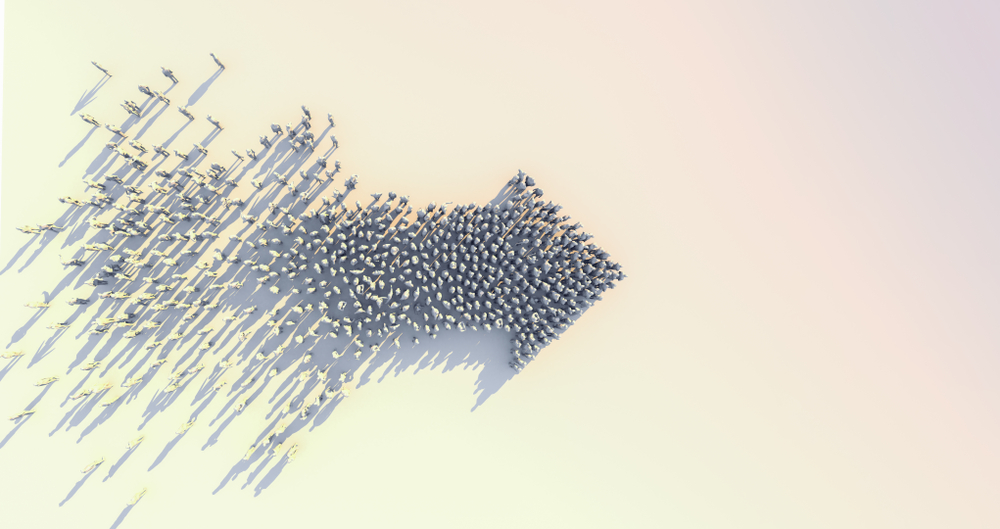Thanks to innovations and new technology, ophthalmic practice is always evolving.
From procedures like femto-cataract surgery, micro-invasive glaucoma surgery (MIGS), corneal cross-linking (CXL), Descemet membrane endothelial keratoplasty (DMEK), Descemet stripping endothelial keratoplasty (DSEK) — and a growing spectrum of intraocular lenses — there has never been a more exciting time to be in ophthalmology.
Start-ups and the big guns alike, are now zoning in on small aperture intraocular lenses (IOLs), post-surgical adjustable IOLs and curved IOLs, as well as developing ways to enhance glaucoma and cataract surgeries — and these are among the many new paradigms that are pushing the boundaries today.
For more information on the latest (and greatest?) innovations, check out the highlights below from the OIS Anterior Innovation Showcase: Changing the Paradigm Company Showcase.
The Holy Grail for Anterior Uveitis?
Daphne Haim-Langford, PhD, founder and CEO of Israel-based Tarsier Pharma introduced the company’s TRS01 eye drops, a novel molecule for the treatment of blinding ocular diseases.
Targeting anterior secondary blindness due to uveitis, TRS01 is a first indication eye drop formulation for anterior uveitis that does not suppress the immune system, but rather modulates it. TRS is a novel chemical entity and a conjugate of two anti-inflammatory molecules — tuftsin and PC (phosphorylcholine) — that produce a synergistic effect to induce a macrophage shift from an inflammatory state to an anti-inflammatory state.
Their recent Gadot 20/20 trial data showed 71% of subjects treated with TRS01 (1%) four times per day reached 0 anterior chamber cells after three weeks of treatment. The group that received a high dose (1%) of TRS reported no severe adverse events and good visual acuity (VA), with 85.7% experiencing prompt pain resolution in week 1 and significant IOP reduction in week 3.
“TRS01 showed steroid-like efficacy without the associated steroid side effects. This is the holy grail,” said Dr. Haim-Langford. Tarsier is now developing slow-release TRS02 which can be used for intravitreal injections for diabetic macular edema, non-proliferative diabetic retinopathy and dry age-related macular degeneration (dry AMD).
Hope for Vernal Keratoconjunctivitis

Next, Japan-based Santen’s cyclosporine A cationic emulsion (CsA CE, Verkazia®) 0.1% may just be the answer for vernal keratoconjunctivitis (VKC), according to the VEKTIS study. VKC is a severe form of IgE (immunoglobulin E) and T-cell mediated, sight-threatening, allergic conjunctivitis that occurs mostly in male children.
“The lack of availability of a commercial preparation of topical cyclosporine A (CsA), difficulties accessing the compounded product, and legal restrictions on its topical use in many countries have precluded its widespread use for VKC,” said Steve Babineaux, senior medical science liaison, ophthalmology, for Santen.
“Thus, Santen developed CsA CE 0.1% to address some of these challenges. The CsA cationic nanoemulsion increases the bioavailability of CsA at the ocular surface,” he explained.
The results of the VEKTIS study, which enrolled patients with severe VKC and severe keratitis, showed efficacy of the drug in improving keratitis and related symptoms, as well as improved quality of life.
Side Views Take Center Stage
While IOLs have come a long way, there is still an opportunity to address an unmet need: inadequate optics for peripheral vision.
Enter ArtIOLs, “the unique EDOF intraocular meniscus” developed by small Spanish startup Voptica. Founded in 2010 as a spin-off from the Optics Laboratory R&D group at the University of Spain, the company specializes in personal vision testing and correction.
After years of study comparing optical image quality in the periphery of phakic and pseudophakic eyes, they discovered that there is an incorrect field curvature using standard IOLs in pseudophakic eyes, where peripheral astigmatism is more prevalent than in normal eyes.
“All current IOLs are designed only for a small part of the visual field,” Voptica’s CEO and Founder Dr. Pablo Atal explained, He added that compromised peripheral vision contributes to increased risks of falls, poor object recognition, driving difficulties and limited freedom of movement.
“So we designed — not a thick crystalline lens — but a unique intraocular meniscus that mimics the natural lens to provide optimized field curvature and hopefully, better vision,” said Dr. Atal.
More than 800 patients were implanted with these lenses and the patented ArtIOLs resulted in differences in vision at 40 degrees — for instance, it allows for better detection of steps on a staircase. ArtIOLs, which provide less peripheral astigmatism and better peripheral contrast sensitivity, are also the first customizable EDOF IOL, he said.
Far-sighted Help Lasting 8 Hours

Visus Therapeutics (Seattle, Washington, USA) is combating presbyopia with an innovative drop named Brimochol that could last for a minimum of 8 hours, according to CEO Ben Bergo.
This first-of-its-kind treatment (as no other FDA approved therapies for presbyopia are available currently as of yet) could potentially help 2 billion adults worldwide who struggle with this issue. The patented eye drops are a combination of carbachol and brimonidine tartrate, a formulation developed by renowned ophthalmologist and advisor for Visus Therapeutics, Dr. Herb Kaufman. Six clinical trials have shown an improvement in near visual acuity (of five lines or better) with a duration of between 8-12 hours per dose. The company has recently closed a $36 million Series A financing with partners RWG Investments, Johnson & Johnson Innovation (JJDC) and Willie AG, and are now in the 505(b)(2) pathway with the FDA in its phase 2 study with a planned NDA filing in Q3 of 2022.
Mite-y Dose of Potential
This could spell the end of collarettes that annoy about 9 million Americans as California-based Tarsus Pharmaceuticals is developing TP-03 as a treatment for demodex blepharitis.
Chief Commercial Officer Aziz Mottiwala said the large and underserved market — an estimated 25 million blepharitis patients — brings opportunities as 58% of all patients in its prevalence study had collarettes (made up of demodex mite’s waste material). What was interesting was that demodex was also found to be prevalent in approximately 69% of dry eye patients, in about 67% of cataract patients, and further, studies have shown direct correlation between demodex blepharitis and contact lens intolerance.
TP-03’s killer weapon is the ingredient lotilaner, which is a potent antagonist of insect and arachnid GABA-CI channels, a highly lipophilic molecule. Found in its multi-dose eye drop solution, the treatment is expected to last for 6 weeks with a twice a day dosing. Their studies have shown excellent collarette cure rates and mite eradication rates.
“Clean lids and no mites, TP-03 has the potential to offer a rapid, complete and durable effect on demodex blepharitis,” said Mr. Mottiwala. Indeed, the company’s Europe Phase 2b study showed complete mite eradication by day 14 and a large number of patients who had 0 collarettes and 0 mites on day 42. The effects lasted between 6 and 9 months before the mites appeared again.
They have now struck a strategic partnership with LianBio (Shanghai, China) to develop and commercialize TP-03 in greater China (i.e., mainland China, Hong Kong, Taiwan and Macau). China has an estimated 40 million demodex blepharitis patients and about 70 million meibomian gland disease (MGD) patients, which comprise an estimated $4.5 billion market in China by 2023. Tarsus is looking forward to developing TP-03 with a preservative-free option while also working on its pipeline, including TP-04 a topical formulation for rosacea and TP-05 an oral drug for lyme disease and malaria.
Ringing Away the Pain Sans Steroids
For treating post-surgical cataract pain, U.S.-based LayerBio Inc. CEO Dr. Kenneth Mandell introduced the bioerodible OcuRing-K — a ketorolac designed to deliver the benefits of NSAIDS without the topical side effects. Topical NSAIDs can cause corneal melts and delay the healing, and have label warnings for patients with diabetes, dry eye disease and rheumatologic disorders — which make up 30% of the target market.
The Phase 1 study of the OcuRing has “de-risked” the instrument for its preliminary safety, efficacy and usability in patients undergoing cataract surgery; this included postoperative observation for 28 days and more than a year’s profile on its safety.
Dr. Mandell said the OcuRing is easy to insert using standard surgical technique. “After surgery, the eyes looked pristine. All eyes dilated fully and symmetrically with clear media and normal red reflex. No steroids were given per protocol and no subjects required rescue therapy,” he said.
All subjects in the study reported no pain and no evidence of inflammation by day 28. “OcuRing-K has the potential to be a steroid-sparing monotherapy,” he said, adding that this product has bright prospects in a US$1.2 billion cataract surgery anti-inflammatory market.
They are planning for a larger scale randomized controlled Phase 2 study and will only require a single Phase 3 as a 505(b)(2) product for registration. Dr. Mandell has more than 10 granted U.S. patents and is a co-inventor of Oyster Point Pharma’s OC-01.
“I believe OcuRing can become the new standard-of-care for treating postoperative pain and inflammation.”
Breakthrough Glaucoma Surgical Treatment

Giving glaucoma patients something to look forward to, ViaLase Inc. (California, USA), is developing a novel technology for the treatment of primary open-angle glaucoma, one of the most common forms of the disease. ViaLase’s non-invasive, micron-OCT image-guided femtosecond laser trabeculectomy looks set to meet the needs of the market for an effective procedure that not only provides personalized, long-lasting IOP reduction (with micron accuracy placement), but also minimizes post-operative care, eliminating the need for topical medication, while shortening recovery time.
The company’s founder and CEO Mr. Tibor Juhasz said the procedure reduces IOP by increasing aqueous outflow using a micron resolution 3D image-guided femtosecond laser to non-invasively create customized drainage channels through the trabecular meshwork in the vicinity of collector channels.
The first human clinical trial has been performed in Hungary where it resulted in immediate and consistent IOP reduction, decreasing after one day and even went down to 14mmHg at 3 months, a 30% reduction of IOP during that period.
“This single channel treatment was able to bring all patients into a normal IOP range,” Mr. Juhasz said. ViaLase’s technology looks promising compared to trabectome/dual blade, MIGS, ELT, and even SLT and Belkin treatments. “We believe the surgery can be used as a firstline treatment, therefore delaying the use of medication while having the potential to substantially impact glaucoma management.”
Small Aperture Technology Aims to go Big
In another breakthrough for presbyopia correcting lenses, the IC-8 Small Aperture IOL is designed to deliver true extended depth of focus by filtering out the harmful visual effects of unfocused or aberrated light, allowing only focused light to land on the retina. Ms. Yari Mitchell, chief business development officer for AcuFocus (California, USA), shared how the high-quality hydrophobic acrylic aspheric monofocal optic with embedded filtering will deliver its promised effect.
“Moving from concept to commercialization, we’ve taken our time to work with physicians to understand our patients’ experience, how to optimize outcomes and ultimately where the IC-8 IOL fits in clinical practice,” Ms. Mitchell said. They are expecting to launch the IOL in Q1 of 2022.
Beyond presbyopia, AcuFocus believes that through research, the opportunity for small aperture optics may extend to a large and underserved segment — cataract patients with “complex cornea.” AcuFocus defines this term, which they found to occur in 12-14% of cataract patients, as “a common condition inclusive of diverse etiologies,” including those that are genetically occuring (like corneal higher order aberrations of more than 0.5 microns); surgically-induced etiologies (refractive, keratoplasty, etc.); or disease or trauma-induced, such as those with keratoconus or scarring.
“All complex cornea patients present with elevated complexity when it comes to lens selection and lens power calculation, depending on their ocular history,” Ms. Mitchell explained. “Eyes with complex or irregular corneas are typically not candidates for premium IOL technologies,” she added. “We believe small aperture optics is uniquely positioned to serve the diverse needs of this patient population.”
The Perfect ALLY for Change
A new generation of femtosecond laser-assisted cataract surgeries (FLACS) is set to storm the cataract care scene — and Lensar (Florida, USA) aims to take the lead. CEO Nick Curtis pointed out several factors that seem to indicate this before introducing the company’s new Lensar ALLY femto-phaco surgical console.
He said that the market is ready, as the demand for FLACS in the EU is predicted to outpace demand for premium IOLs (in a survey by Market Scope).This is besides the pandemic, which has driven patients toward favoring electric procedures rather than depending on their glasses, which can fog up easily. Meanwhile, surgeons and their staff are realizing the need to operate with better efficiency more than ever before.
Thus, the Lensar ALLY promises better outcomes for patients and surgeons, thanks to features like iris registration and other unique anatomical markers, among its many intelligent capabilities. For example, there’s no longer the need to manually mark the cornea with Lensar ALLY. Its proprietary imaging also automatically categorizes cataract density, increasing treatment efficiency while decreasing overall energy used in the eye.
A study on its marking results, published by researchers in Xiamen University1 in China, has shown excellent accuracy in axis alignment — this has also helped surgeons achieve better astigmatism outcomes.
Other papers (presented at the ASCRS-ASOA Annual Meeting and AAO Annual Meeting) and a study2 have also shown that Lensar patients consistently have ≤1.5D of the targeted refractive outcome compared with established brands of toric lenses.
“Lensar ALLY is integrated with five preoperative devices — and we’re working with Carl Zeiss to integrate the preoperative data from the IOLMaster 700 to the Lensar laser, enabling integration with over 90% of preoperative biometry worldwide.
“It is also expected to cost less than other femtosecond laser systems,” he said.
References:
- Chen Q, Zhang G. Iris Registration Capsulotomy Marking Versus Manual Marking for Toric Intraocular Lens Alignment in Cataract Surgery. Am J Ophthalmol. 2021;221:97-104.
- Visco DM, Bedi R, Packer M. Femtosecond laser-assisted arcuate keratotomy at the time of cataract surgery for the management of preexisting astigmatism. J Cataract Refract Surg. 2019;45(12):1762-1769.
Editor’s Note: The OIS Anterior Innovation Showcase: Changing the Paradigm Company Showcase was held on April 8, 2021. Reporting for this story took place during the event.



